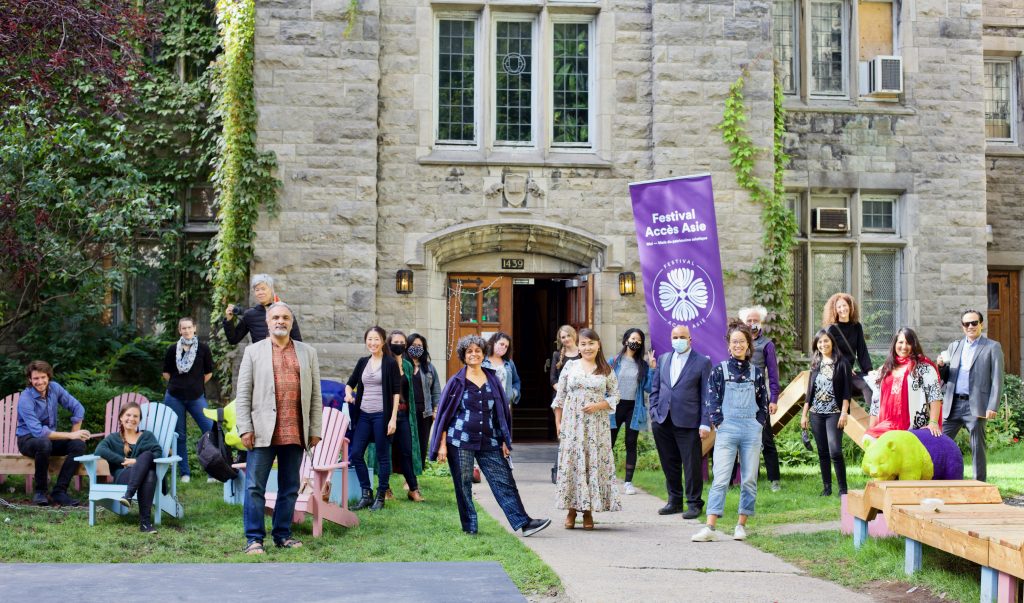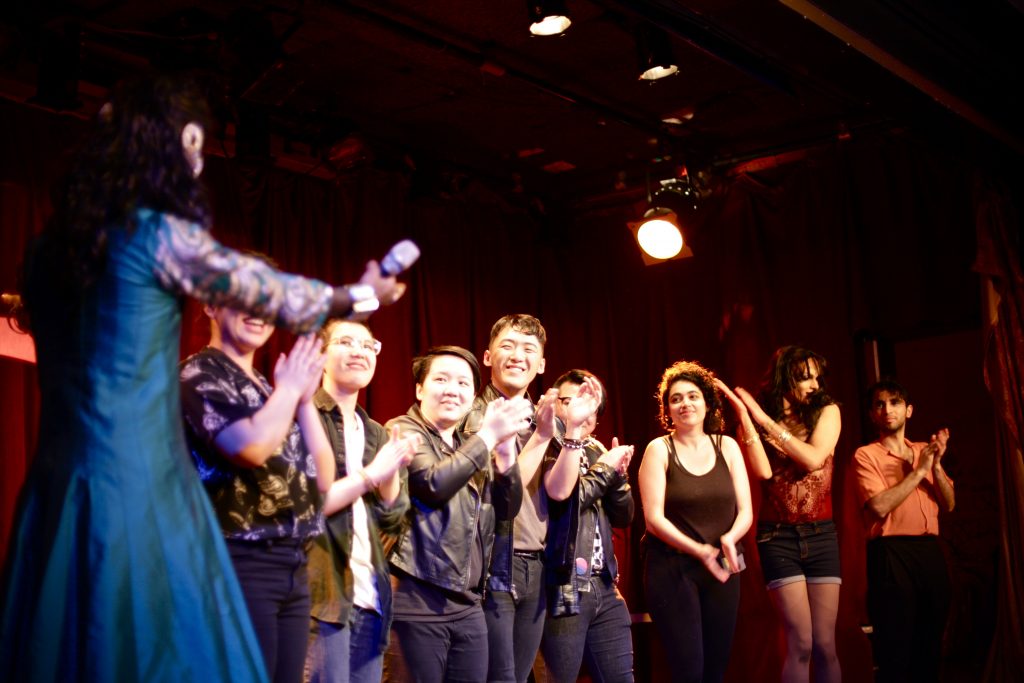The Festival
Objectives
- To advance the appreciation and understanding of Asian arts, cultures and histories.
- To create a favourable environment for the promotion of Asian arts, cultures and histories.
- To disseminate the work of artists of Asian origin and artists whose work is inspired by Asian arts, cultures and histories.
- To provide opportunities for emerging and professional artists to present their work.
- To support a diversity of artistic disciplines.
- To promote greater cultural tolerance and intercultural understanding.
- To promote greater cultural tolerance and intercultural understanding.
- To dismantle stereotypes and cultural barriers.
- To foster dialogue that develops interdisciplinary, intergenerational and intercultural solidarity.
- To provide educational initiatives that facilitate the integration of new immigrants and visible minorities into society.
- To make a positive contribution to Quebec and Canadian society by advancing intercultural exchange.
- To ensure that the Festival is a safe and inclusive space for artists
Socio-cultural Context
Montreal is one of the most culturally diverse urban centres in Canada and includes a significant Asian population. However, the Asian population of Montreal is quite diverse in that it comprises many communities, each with its own racial, ethnic, linguistic and/or cultural identity. In addition to this cultural diversity, Asian communities are also geographically fragmented across the urban expanse of greater Montreal and its suburbs.
Such an environment renders dialogue, exchange and collaboration between these communities very difficult and generates great obstacles in the struggle to establish any kind of solidarity.

Barriers to mainstream culture
Even though Canada has officially adopted an ideal of multiculturalism, long held prejudices about what constitutes Canadian identity remain institutionalized. The images of Canadian culture and identity propagated by the media remain predominantly “white”. As with many other communities, Asians have had great difficulty in reconciling this image of Canadian culture with their need to assert and to express their own identities.
Media stereotypes continue to have a profoundly disempowering effect on Asians. The struggle to establish that feeling “Canadian” while also taking great pride in one’s Asian culture do not have to be mutually exclusive has only recently begun to receive the kind of attention it deserves.
Barriers between Asian communities
Historically, there has been cultural and economic reciprocity between the different communities in Asia. However, after arriving in Canada, the various Asian communities tend to fragment. This isolation is often the result of trying to adapt to a social environment that is considerably different from the one in the country of origin. Consequently, the interaction and dialogue that was present outside Canada is severely reduced and cultural differences, religious and language barriers further compound this effect.
Barriers for non-traditionals artists within their own communities
Many Asian artists are doing work that is either experimental or constitutes a fusion of “east” and “west”. In order to do this kind of work, they have often had to do so outside their communities. As a result, Asian communities are unaware of these artists, are not exposed to their work and rarely have opportunities to support them. Consequently, it has become imperative to facilitate reconnection of these artists to their communities.

Respectful and Inclusive
The Festival recognizes that artists identities are comprised of a wide diversity of elements that relate to the socio-economic, cultural, religious, gender, ability, and many other factors. The values of inclusiveness and respect with respect to the diversity of artists and others that collaborate with the Festival are at the core of its values.
As such, the Festival, will seek guidance form the following human rights instruments, whether in regard to the selection and promotion of artists, the hiring of staff and the selction of administrators and any other activity in which such guidance would be relevant (this particulary for areas of activity where it is important to ensure non-discrimination)
- The Universal Declaration of Human Rights
- The Canadian Charter of Rights and Freedoms
- The Canadian Humain Rights Act
- The Carter of Human Rights and Freedoms (Quebec)